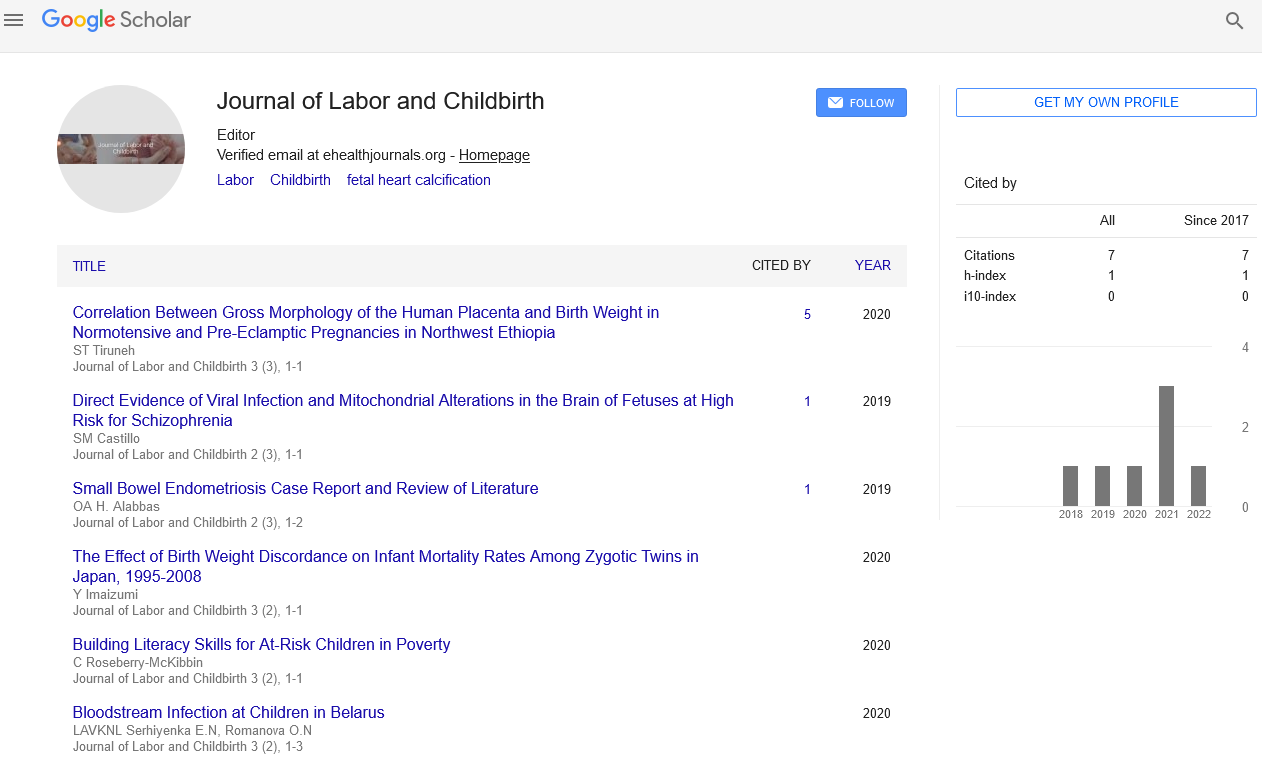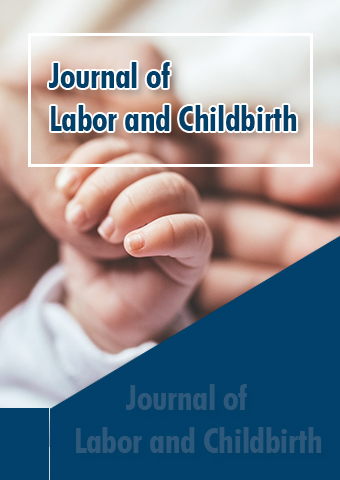Perspective - Journal of Labor and Childbirth (2023) Volume 6, Issue 5
Infertility: Causes, Diagnosis and Treatment Options
- Corresponding Author:
- Amanda Driscoll
Department of Child Welfare,
Amit University,
Boston,
United States
E-mail: adriscol@fsu.edu
Received: 04-Sep-2023, Manuscript No. jlcb-23-118889; Editor assigned: 07-Sep-2023, PreQC No. jlcb-23-118889 (PQ); Reviewed: 21- Sep-2023, QC No. jlcb-23-118889; Revised: 03-Oct-2023, Manuscript No. jlcb-23-118889 (R); Published: 31-Oct-2023, DOI: 10.37532/ jlcb.2023.6(5).144-146
Introduction
Infertility is a complex and emotionally challenging condition that affects millions of couples around the world. It is defined as the inability to conceive after a year of regular, unprotected sexual intercourse. Infertility can be a result of various factors, including medical, genetic, lifestyle and environmental issues. In this comprehensive article, we will delve into the intricacies of infertility, exploring its causes, the diagnostic process and the diverse treatment options available for those who long to build their families.
Description
Infertility is a widespread issue, affecting approximately 15% of couples worldwide. While it often leads to feelings of frustration, despair and stress, it’s essential to remember that infertility is a medical condition and help is available. To begin, let’s explore some fundamental aspects of infertility.
Types of infertility
Primary infertility: This term is used when a couple has never been able to conceive.
Secondary infertility: Couples who have previously conceived but are struggling to do so again are said to have secondary infertility.
Infertility duration
If a couple has been trying to conceive for one year or more without success, they may be considered infertile. In cases where the woman is over 35 years of age, it is recommended to seek help after six months of trying due to declining fertility with age.
Common causes of infertility
Infertility can be attributed to numerous factors and these factors can affect either one or both partners. Some of the most common causes of infertility include:
Ovulatory disorders: Irregular or absent ovulation, often caused by conditions like Polycystic Ovary Syndrome (PCOS), can significantly impact a woman’s fertility.
Tubal blockage or damage: Blocked or damaged fallopian tubes can impede the transport of the egg to the uterus or prevent sperm from reaching the egg.
Endometriosis: This condition involves the growth of tissue outside the uterus, which can lead to scarring and interfere with conception.
Uterine abnormalities: Structural issues in the uterus can make it difficult for a fertilized egg to implant and grow.
Male factor infertility: Low sperm count, poor sperm motility or abnormal sperm morphology can hinder fertility.
Advanced maternal age: As women age, the quantity and quality of their eggs decline, making it more challenging to conceive.
Unexplained infertility: In some cases, despite extensive testing, the cause of infertility remains unknown.
Diagnosing infertility
When a couple faces challenges in conceiving, a medical evaluation is the first step in identifying the underlying causes. The diagnostic process is thorough and typically involves:
Medical history: Both partners are interviewed about their medical histories, including any previous pregnancies, illnesses, surgeries or medications.
Physical exams: Physical exams may be conducted to check for any obvious issues, such as varicoceles in men or signs of ovulatory disorders in women.
Blood tests: Hormone levels are evaluated to assess ovulation and other hormonal factors.
Semen analysis: For men, a semen analysis is performed to determine sperm count, motility and morphology.
Ovulation monitoring: Ovulation may be monitored to ensure that it is occurring regularly and correctly.
Imaging tests: Ultrasound and other imaging tests can reveal structural abnormalities, such as fibroids or polyps in the uterus.
Hysterosalpingography (HSG): This test involves injecting a contrast material into the uterus and fallopian tubes to check for blockages or abnormalities.
Laparoscopy: In cases of suspected endometriosis or uterine issues, a minimally invasive surgical procedure called laparoscopy may be performed to visualize and treat these conditions.
Treatments for infertility
The treatment of infertility depends on the specific causes and may vary from lifestyle adjustments to medical interventions. The available treatment options include:
Lifestyle modifications: In some cases, making lifestyle changes can significantly improve fertility. These changes may include maintaining a healthy weight, quitting smoking, moderating alcohol consumption and managing stress.
Medications: Various medications are used to address infertility issues. For instance, fertility drugs can help stimulate ovulation, while hormonal treatments can correct hormonal imbalances.
Surgical interventions: Surgical procedures can be performed to correct structural issues, such as removing fibroids or repairing damaged fallopian tubes. In men, surgical treatment can address varicoceles or blockages.
Assisted Reproductive Technologies (ART)
Intrauterine Insemination (IUI): Sperm is directly placed into the uterus to increase the chances of fertilization.
In Vitro Fertilization (IVF): This involves the retrieval of eggs and sperm, their fertilization in a lab and the transfer of the resulting embryo(s) to the uterus.
Intracytoplasmic Sperm Injection (ICSI): A single sperm is injected directly into an egg to aid fertilization.
Egg or sperm donation: In cases of severe male or female infertility, using donated eggs or sperm can be an option.
Surrogacy: In situations where a woman cannot carry a pregnancy, surrogacy may be considered, where another woman carries the pregnancy to term on behalf of the intended parents.
Donor embryos: Couples with multiple infertility issues can opt for embryos donated by others, which are transferred into the woman’s uterus.
Genetic testing: Pre-implantation genetic testing can be performed to screen embryos for genetic abnormalities before IVF.
Fertility preservation
In some cases, individuals may choose to preserve their fertility before undergoing treatments that could impact their ability to conceive. Fertility preservation methods include:
Egg freezing (Oocyte cryopreservation): Women can freeze their eggs for future use, which can be helpful for those facing medical treatments that may affect fertility or for those who wish to delay childbearing.
Sperm banking: Men can also bank their sperm, which can be useful in cases of medical treatments or for individuals with concerns about their future fertility.
Conclusion
Infertility is a complex and challenging condition, but it’s essential to remember that there are numerous diagnostic and treatment options available. With advances in medical technology and a better understanding of the causes of infertility, many couples can overcome this hurdle and realize their dream of parenthood.
If you or someone you know is struggling with infertility, seek medical advice and emotional support. Infertility is a shared journey and there is hope for building a family through various treatment options and a supportive community that understands the emotional rollercoaster that accompanies the path to parenthood.

